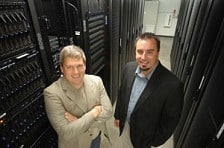Tech on the rocks

.bodytext {float: left; } .floatimg-left-hort { float:left; margin-top:10px; margin-right: 10px; width:300px; clear:left;} .floatimg-left-caption-hort { float:left; margin-bottom:10px; width:300px; margin-right:10px; clear:left;} .floatimg-left-vert { float:left; margin-top:10px; margin-right:15px; width:200px;} .floatimg-left-caption-vert { float:left; margin-right:10px; margin-bottom:10px; font-size: 10px; width:200px;} .floatimg-right-hort { float:right; margin-top:10px; margin-left:10px; margin-bottom:10px; width: 300px;} .floatimg-right-caption-hort { float:left; margin-right:10px; margin-bottom:10px; width: 300px; font-size: 10px; } .floatimg-right-vert { float:right; margin-top:10px; margin-left:10px; margin-bottom:10px; width: 200px;} .floatimg-right-caption-vert { float:left; margin-right:10px; margin-bottom:10px; width: 200px; font-size: 10px; } .floatimgright-sidebar { float:right; margin-top:10px; margin-left:10px; margin-bottom:10px; width: 200px; border-top-style: double; border-top-color: black; border-bottom-style: double; border-bottom-color: black;} .floatimgright-sidebar p { line-height: 115%; text-indent: 10px; } .floatimgright-sidebar h4 { font-variant:small-caps; } .pullquote { float:right; margin-top:10px; margin-left:10px; margin-bottom:10px; width: 150px; background: url(http://www.dmbusinessdaily.com/DAILY/editorial/extras/closequote.gif) no-repeat bottom right !important ; line-height: 150%; font-size: 125%; border-top: 1px solid; border-bottom: 1px solid;} .floatvidleft { float:left; margin-bottom:10px; width:325px; margin-right:10px; clear:left;} .floatvidright { float:right; margin-bottom:10px; width:325px; margin-right:10px; clear:left;} Energy prices keep going up while the size of most computer servers keeps going down.
That trend, says Travis Thompson, vice president of operations for LightEdge Solutions Inc., is beginning to create problems.
“Manufacturers are trying to pack as much power into as small a piece of equipment as possible without melting it,” he said. “That has raised some issues for us.”
Companies worldwide are adding equipment to keep up with surging computer needs, and then are forced to make substantial changes to alleviate the leap in costs associated with running the big buildings, or data centers, housing all that gear.
Industry experts say the power consumption of data centers is doubling every five years or so, making them one of the fastest-growing users of energy in the United States.
Gartner Inc., an information technology consulting firm, has estimated that by 2010 nearly half of the Forbes Global 2000 companies will spend more on energy than on hardware such as servers. Energy costs, now about 10 percent of the average IT budget, could rise to 50 percent in a matter of years.
“With the advent of high-density computer equipment … many data centers have maxed out their power capacity,” said Michael Ball, research vice president of Gartner. “It’s now possible to pack (server) racks with equipment requiring 30,000 watts per rack. This compares to only 2,000 to 3,000 watts per rack a few years ago.”
Increased power consumption translates into a significant increase in heat generated, resulting in massive electrical costs to cool the data center.
To keep servers at the right temperature, companies mainly rely on air conditioning. The more powerful the machine, the more cool air needed to keep it from overheating. By 2005, the energy required to power and cool servers accounted for about 1.2 percent of total U.S. electricity consumption, according to a report released by Lawrence Berkeley National Laboratory.
 Blade technology has minimized space requirements for racks of servers while increasing the energy demand. Increased power translates into a significant increase in heat generated, resulting in massive electrical costs to cool the data center and keep equipment from overheating. Photo by Duane Tinkey
Blade technology has minimized space requirements for racks of servers while increasing the energy demand. Increased power translates into a significant increase in heat generated, resulting in massive electrical costs to cool the data center and keep equipment from overheating. Photo by Duane Tinkey “It takes about one ton of air conditioning for every rack in our data center,” said Thompson, whose company operates the EdgeBCC data center in Altoona. “It’s a fight everyone is going through right now. We’re seeing smaller racks that are much more powerful. More power puts off more heat.”
Joe Shields, LightEdge’s director of systems engineering and operations, said most hardware makers aren’t all that concerned with energy efficiency, only trying to make their products as fast and powerful as possible.
“There are a few companies paying attention to this issue right now, but for the most part, they don’t make their money by creating energy-efficient hardware,” Shields said.
Companies are also still a long way from forcing designers to think green, Shields said.
“People are trying to leverage the most out of hardware as IT budgets shrink,” he said. “IT is an arms race, and no organization has the option not to expand. Companies don’t want to do anything that might reduce reliability.”
New standards
Though the private sector may not be clamoring just yet for energy-efficient technology, Uncle Sam is. The U.S. Environmental Protection Agency is proposing an extension of its Energy Star program for desktop PCs and consumer appliances to computer servers later this year. If that goes well, Energy Star standards for power consumption could be applied to other data center equipment, including networking equipment and storage arrays.
“Something like that would actually make our lives easier,” Thompson said.
But not all private companies are turning a blind eye to the issue. Google Inc., Intel Corp. and a host of PC and component companies have developed the Climate Savers Computing Initiative, an effort to increase energy efficiency in PCs. At the heart of the initiative is a push to get PC makers and consumers to adopt more efficient power supplies and voltage regulators. These two components, working together, convert AC power from a wall socket to the 12-volt DC power that a computer uses.
Most believe, however, that it’s the power used to cool servers where the biggest potential energy savings lie. Gartner estimates that anywhere from 30 to 60 percent of the energy used by a data center is wasted, with the biggest culprit being the inefficiency of the cooling systems.
“When the motors to the fans aren’t running, we’re saving 30 percent a month on our energy consumption,” Thompson said. “The next major step will be to figure out how the push air into data centers without using as much power.”
In order to avoid high energy costs associated with IT departments, many companies are simply relocating their data center operations to other markets.
“The power grid on the East Coast is much more expensive than here in the Midwest,” said Craig Justice, chief information officer and senior vice president of operations for GeoLearning Inc. “I would estimate it’s around 15 to 20 percent cheaper here than on the coasts.”
Purpose-driven building
The energy costs associated with operating a data center are going to rise, Thompson said, and there is little companies can do about it. So many businesses are choosing to consolidate operations with other companies in a single data center in order to get help shouldering the cost of its operation.
“It is incredibly cost prohibitive to construct a data center from the ground up, costing nearly $500 a square foot,” Thompson said. “And retrofitting an existing building may save on the short term, but the energy costs are going to be much higher.”
When a building is built for the specific purpose of housing and cooling racks of servers, it can be much more energy efficient, Justice said.
“When a building is purpose driven, it is designed to maximize air flow from the cooling systems,” LighEdge’s Shields said. “You can also ensure you have enough air conditioning systems to adequately keep the technology running.”
At EdgeBCC, each server room has 180 tons of cooling capacity. Servers are cooled by alternating row, forced downdraft circulation. Air is driven down the “cool row,” pulled through equipment and expelled to the “warm row” for recirculation.
Dave Ahlberg, an energy-efficiency product manager with MidAmerican Energy said the design of a data center can do wonders to cut down on its energy use.
“When things like air flow and aisle placement are taken into consideration during the design phase of a building, it is much easier to reduce energy use,” he said. “The challenge is getting that message out to customers.”
The problem many data centers are facing is that with the speed at which technology is changing, space concerns have taken a back seat to power capacity.
“A lot of data centers have plenty of space because the technology is getting smaller,” Justice said. “But the power the servers draw and the energy it takes to cool those servers cause many centers to simply reach the limits of their energy capacity.”
As an example, Thompson points to blade servers, which are self-contained computer servers designed for high density. Racks can hold more than twice as many blade servers as traditional servers, which minimizes space requirements but increases power demand.
Into the future
As energy prices continue to rise, companies will have to start looking at ways to reduce the costs associated with running a data center.
“There are a number of things on the horizon that just don’t work today,” Thompson said. “But it’s something everyone is beginning to talk about.”
One small data center in Romoland, Calif., operates with solar power captured via ground-mounted panels. But right now, alternative energy is not a viable option in most cases, Thompson said.
A Minnesota data center uses cool outside air to moderate the temperature in its data centers, a technique known as “freecooling.” When the air temperature is about 40 to 42 degrees, its chillers are shut off. Thompson said this method is problematic for LightEdge’s data centers because it causes humidity to drop substantially, which in turn increases static electricity.
“Then you get into some serious hard drive issues,” he said.
For now, Shields said, the goal for data centers like his company’s is simply to reduce energy costs where they can and hope technology will one day make their jobs easier.
“You have to work with what is available,” he said. “And that is what we’re doing.”
Justice said the IT industry has made great strides recently toward reducing power consumption, and he is confident those breakthroughs will continue.
“Power usage is a concern, and the industry is reacting to that and making adjustments,” he said.








